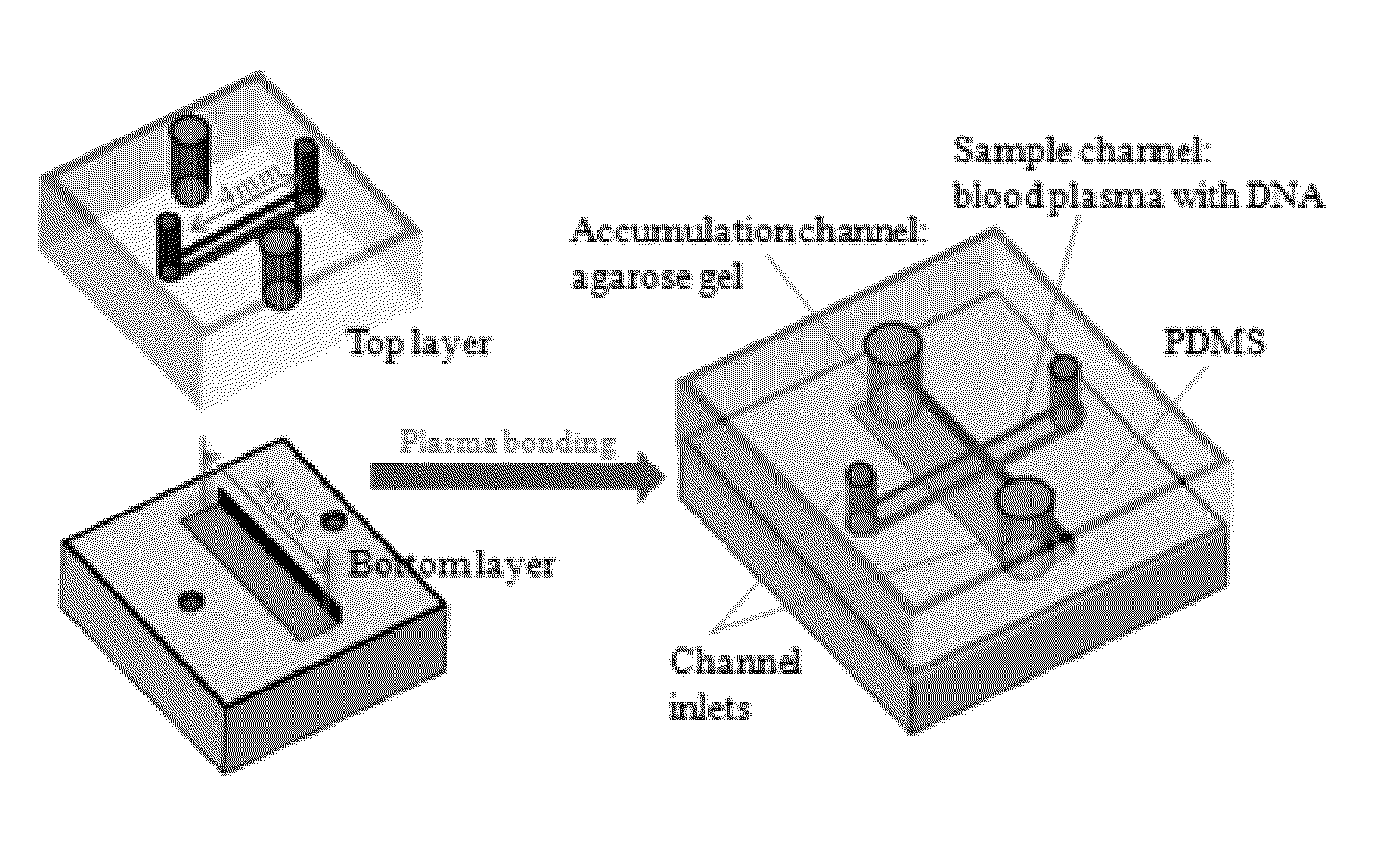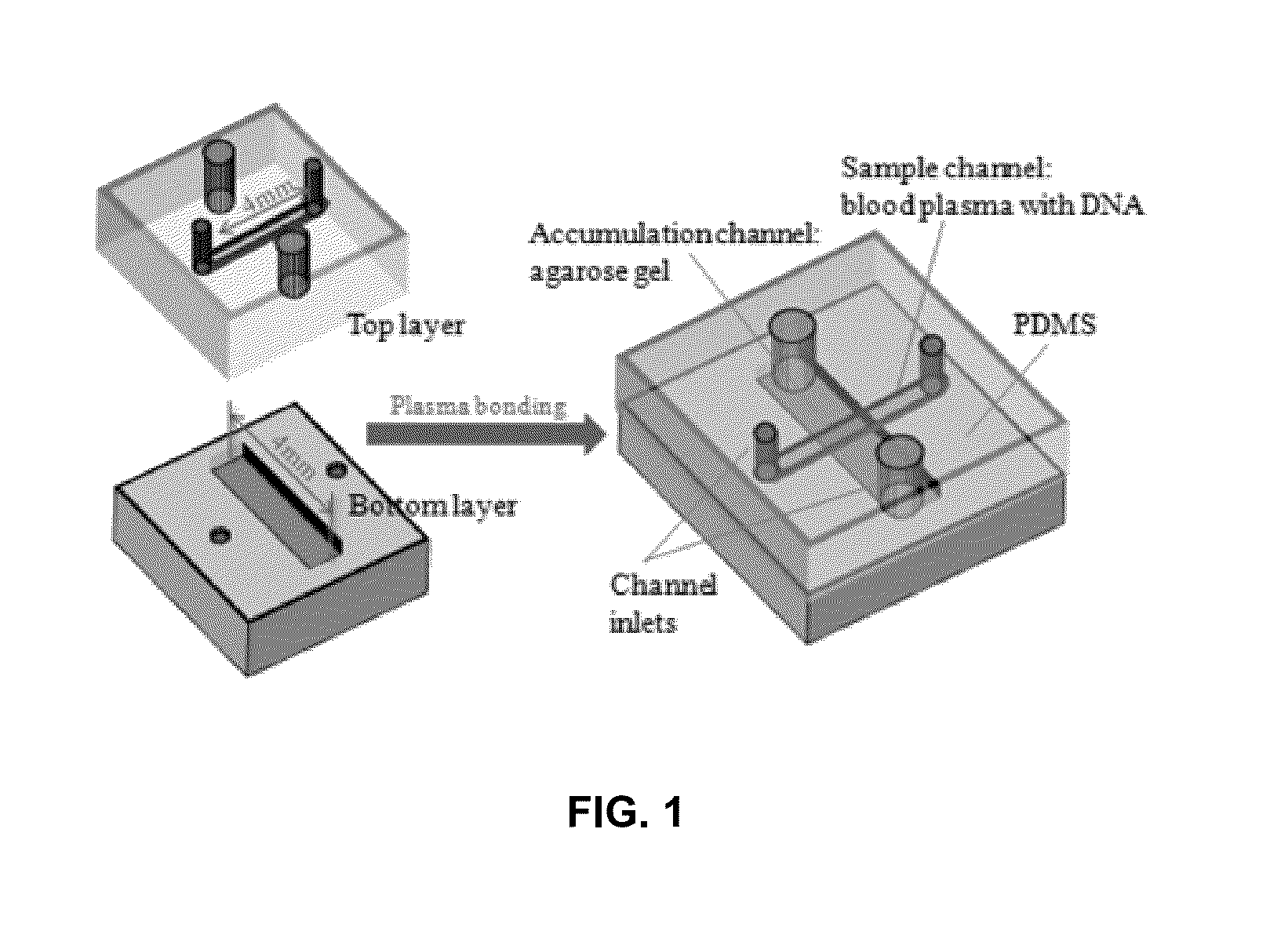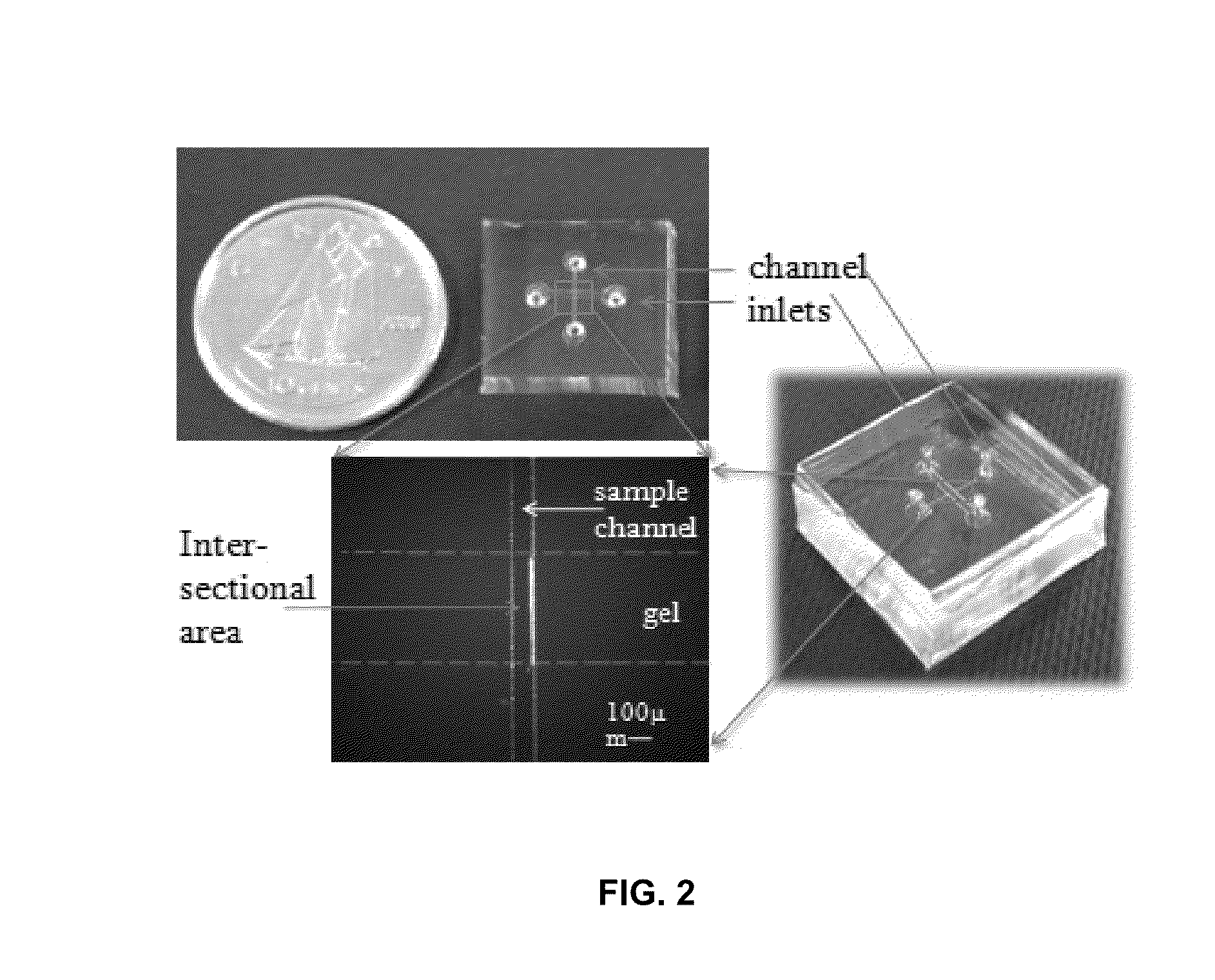Microfluidic device for detecting nucleic acids and associated methods
a microfluidic device and nucleic acid technology, applied in the direction of fluid pressure measurement, liquid/fluent solid measurement, peptide measurement, etc., can solve the problems of severe sepsis, morbidity and mortality in the western world, and the whole process takes several hours, and achieves high levels of cfdna
- Summary
- Abstract
- Description
- Claims
- Application Information
AI Technical Summary
Benefits of technology
Problems solved by technology
Method used
Image
Examples
examples
[0099]The basic goal of the device is to: 1) quickly differentiate between survivors (˜1 μg / ml) and non-survivors (over ˜5 μg / ml) in severe sepsis patients based on cfDNA concentration in blood, and 2) measure the various cfDNA levels in those non-survivors. To realize this objective, several operations may be performed: 1) cfDNA in blood should be separated from the constituents that may significantly influence quantification results, such as red blood cells; 2) cfDNA should be concentrated for better quantification due to its low concentration in blood; 3) the concentration value needs to be transduced into an optical or an electrical signal which can be easily recorded and quantified. Based on these requirements, an electrokinetic (EK) approach [9-15] was selected to extract and concentrate cfDNA in blood as it is a reagent-free process and relatively fast compared with other DNA extraction methods such as silica-based absorptive extraction [16-18], pH-induced DNA capture [19, 20...
PUM
| Property | Measurement | Unit |
|---|---|---|
| Time | aaaaa | aaaaa |
| Density | aaaaa | aaaaa |
| Density | aaaaa | aaaaa |
Abstract
Description
Claims
Application Information
 Login to view more
Login to view more - R&D Engineer
- R&D Manager
- IP Professional
- Industry Leading Data Capabilities
- Powerful AI technology
- Patent DNA Extraction
Browse by: Latest US Patents, China's latest patents, Technical Efficacy Thesaurus, Application Domain, Technology Topic.
© 2024 PatSnap. All rights reserved.Legal|Privacy policy|Modern Slavery Act Transparency Statement|Sitemap



